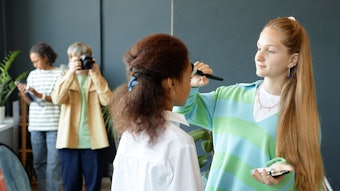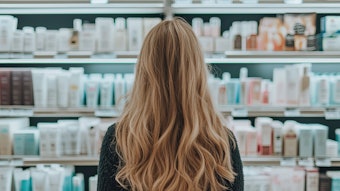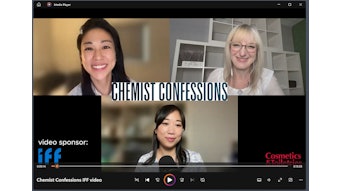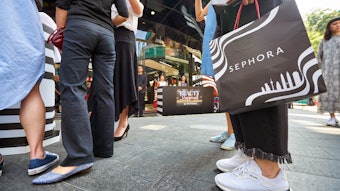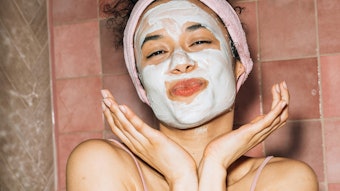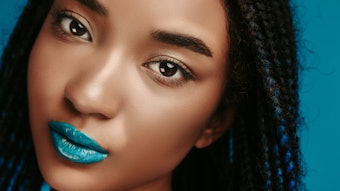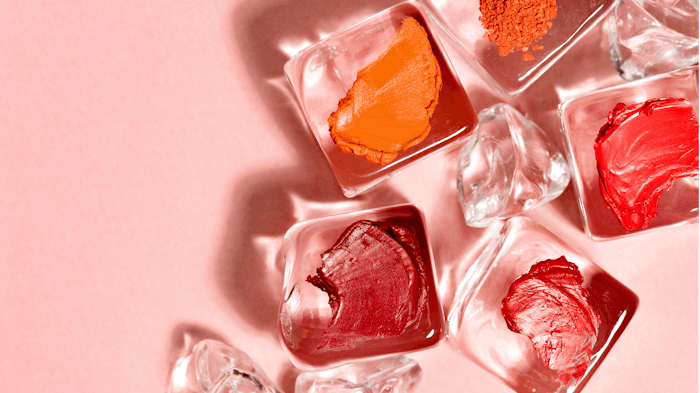
Beauty consumers are engaged by novel texture blends, versatile product forms plus tech-forward tools. To delve deeper into the science, we called on sensory experts to explain which formula parameters are most critical to consumer experience, the best ways to measure these parameters, how to interpret consumer experiences and sensory language, and future areas of innovation.
This article is only available to registered users.
Log In to View the Full Article
Beauty consumers are engaged by novel texture blends, versatile product forms plus tech-forward tools. To delve deeper into the science, we called on sensory experts to explain which formula parameters are most critical to consumer experience, the best ways to measure these parameters, how to interpret consumer experiences and sensory language, and future areas of innovation.
Following are insights from:
- Prof. Francis McGlone (FM), Manchester Metropolitan University, UK and Aalto University School of Science, Finland;
- Experimental psychologist Charles Spence (CS), University of Oxford; and
- Kristina O’Keeffe (KO), vice president of global clinical and consumer sciences at the Estée Lauder Cos.
Critical Sensory Parameters, Attributes
C&T: What are the most critical sensory parameters to focus on in product development? What specific attributes are most influential in consumer preferences?
MG: The “sensory journey” has many start points, from the sensory expectations communicated via advertising or past use, e.g., soft, invigorating, calming … to the feel and affordance/haptic properties of the packaging (how easy/pleasant is it to hold in the hand, to apply the product etc.); how it pops out on the shelf; to all the sensory properties in-use; and importantly, “hangover” effects perceived after use. And don’t forget, sometimes a completely dislocative property such as the color of a scent…
CS: I would argue that all sensory elements are likely to be important, and more than that, it is the extent to which the various sensory elements are congruent with each other that is key to driving consumer preferences. Occasionally, people try to deliberately mismatch the sensory inputs in order to elicit some form of surprise reaction (though the latter is much harder to manage effectively in the long-term in the marketplace). While we are all visually dominant, there is no doubting that the C-tactile afferents found in the hairy skin (that are found everywhere apart from the palms of the hands and the soles of the feet) play a really important role in pleasant touch.
I think that one of the key challenges in sensory is to try and find a distinctive sensory attribute, be that a distinctive color, sound, scent or feel to make one’s product stand out from the rest. This is currently simply much easier to do in the visual domain than it is for the other senses. Nevertheless, I think there are some interesting opportunities in terms of innovating in the distinctive sounds associated with product opening or usage. After all, an expensive cosmetic product should sound expensive as well as feel heavy.
KO: In skin care and hair care, focusing on specific sensory parameters is crucial to meet consumer preferences and enhance the overall product experience. Texture can significantly affect consumer satisfaction, making the application experience enjoyable or frustrating. Think about how easy it is to spread a product on your skin or work it through your hair. Transformational textures can be particularly appealing, like when a dense cream melts into your skin or a mask changes color upon application. These transformative moments are often shared on social media, adding to the product's allure.
Beyond texture, the feeling of your skin or hair after application can influence whether you'll use the product again. We all want products that make us feel like we're taking good care of ourselves. Whether it's a tightening sensation from an anti-aging cream or a cool tingle from a scalp treatment, these sensations are highly desirable. And of course, you want a cleanser or shampoo to leave you feeling clean, not greasy, and a moisturizer to make your skin soft and smooth, not dry and tight. It's all about reinforcing the product's benefits!
Let's not forget the power of scent/aroma, especially in hair care products. A pleasing fragrance can evoke positive emotions and enhance the overall experience, while an unpleasant or overpowering one can be a deal-breaker. Recently, there's been a rise in mood-enhancing fragrances in across-beauty categories, which can elevate the sensory experience and contribute to emotional well-being.
Key Biomechanics, Neurological Principles
C&T: Briefly, what key biomechanics or neurological principles are involved in skin/hair care product sensory experiences? How might product developers engage these mechanisms?
MG: First and foremost, understand the physiological and sensory properties of the substrate to which the product is being applied, and how the product will be applied – by self-touch, where the fingers touch the skin; or via an applicator; or from another person, e.g., when a product is applied to the back during a massage.
An important point here is the rheology of the product and how it can dictate how long the application of, e.g., a skin cream takes before the important slip/stick moment arrives. There are some gentle touch sensitive nerves in the skin that are activated by a caressing type touch applied at a particular force and temperature. (Contact me for more information).
CS: The skin of the face, and to a lesser extent the hair are especially interesting in that these are surfaces/a part of the body that we never see directly. Rather we see them in the reflection of the mirror, in photos and through direct touch. Given the lack of direct vision, one might expect that the other senses would tend to play a more important role in determining our perception. What is more, we are much more likely to perceive the scent of a product that is applied to our heads than to our feet, say, given the differing distance to our nose.
Generally speaking, the consumer’s brain likely already has a range of product-related expectations regarding skin/hair products prior to use. This might come from branding, pricing or personal recommendations. Indeed, neuroscience studies show that simply describing a skin cream as expensive leads people to rate as more pleasant to use than if they are told that the same skin cream is cheap instead. In and immediately after use, the fragrance may influence a range of judgments and effects.
So for example, one study demonstrated that a given skin cream reduced visible signs of wrinkles. However, the mechanism was not through any direct effect on the skin, or not only because of that, but also because of the relaxing fragrance of the product – the more relaxed the consumer, the less the signs of wrinkles are visible.
As such, therefore, there are a range of both cognitive and sensory (or perceptual) effects interacting in the consumer’s brain to help determine how the consumer rates the experience of using a given product, and what they will subsequently remember of the experience. The placebo effect is always present and may sometimes have as much of an influence as the sensory properties of the product itself.
KO: Sensory experiences we get from skin care and hair care products are tied directly to how our bodies work. Our skin isn't just there to protect us — it’s also packed full of nerve endings and receptors that let us feel different sensations like touch and temperature. This skin-brain connection means that the products we use can actually affect our mood and emotions, and vice-versa. Neurocosmetics are taking advantage of this by creating products that make us feel good and relaxed.
On the flip side, the way a product feels — its texture, thickness and how easily it spreads — affects how we perceive it. This is because the physical properties of the product can activate receptors in our skin, giving us feelings of smoothness, softness or firmness. When product developers understand these aspects, they can create skin care and hair care items that not only work well, but also feel amazing to use, making us more satisfied overall.
Measuring Sensory Experiences
C&T: What are the most accurate ways to measure a consumer’s sensory experience with a product?
MG: There is no one way but from my perspective as a behavioral neuroscientist, I prefer to use stealth – i.e., don’t ask the consumer about their sensory experiences by questionnaire or focus group. Find more subtle ways such as non-invasive physiological monitoring – there are some very advanced skin patch analysis techniques being develop, e.g., at Caltech that can detect cortisol, inflammatory markers, etc. Having said that, convergent measures are always better.
CS: I am very much a fan of behavioral/psychophysical testing. To me, it feels like the wave of interest in neuromarketing, or consumer neuroscience, that swept through a couple of decades ago has now largely passed as practitioners realize that the majority of cognitive neuroscience techniques are not ideally suited to assessing subtle differences between sensorially similar products under ecologically valid testing conditions.
Here in Oxford, we have spent much of the last quarter of a century trying to help design robust psychophysical tests to support claims regarding the effect of product fragrance, say. We have worked to demonstrate that the fragrance of Lynx deodorant makes young men more attractive to women, for example. In this case, having demonstrated the crossmodal effect behaviorally, we then went on to do the neuro-imaging study to show which part of a young woman’s brain was activated by the face-scent combination.
Elsewhere, we have designed behavioral tests to help prove which fragrance makes women “youngest,” or which scent helps to make the skin, hair or fabric swatch feel softest. The challenge is to develop a neuroscience-inspired behavioral test that can both rapidly and robustly help support a given product claim, or else help a manufacturer to decide between alternate solutions.
However, on reflection, I sometimes now worry that these newer testing methodologies may actually raise as many questions as they answer. For instance, there is a bias toward testing white skin, and by showing static unfamiliar images of people on the computer screen, then that perhaps minimizes the effect of dynamic visual cues that we are normally exposed to when we see someone in person, or look at ourselves in the mirror, say.
KO: Understanding how consumers perceive skin care and hair care products is essential for creating items that not only perform effectively, but also provide a satisfying user experience. We employ various sensory evaluation techniques during the product development process, including descriptive analysis, discriminative testing and consumer testing.
In descriptive analysis, trained experts assess specific attributes of a product, such as texture, application and appearance, to create a detailed sensory profile. This approach helps developers understand how different formulations affect sensory characteristics, guiding product optimization. Think of descriptive analysis as human instruments providing objective assessments of products — it's like having a finely tuned orchestra playing in perfect harmony.
Discriminative testing is another approach that involves comparing products to identify subtle differences. For instance, in triangle tests, participants are given three samples — two identical and one different — and asked to identify the odd one. This method helps detect minor changes in formulations that might impact the user experience. It's particularly helpful when we're upgrading formulas and aiming to preserve most of the aesthetics of the original product.
Who is the best judge of the product experience? The consumer, of course! Consumer testing is widely used to capture perceptions of the product experience and efficacy straight from the user themselves. Everyday users evaluate products based on personal preference and overall satisfaction for a set usage period. This feedback is valuable for understanding market potential and consumer satisfaction, as well as for supporting consumer-based claims. Tests can be conducted in controlled environments (like central locations) or real-life settings to gather authentic user opinions. These tests can be used both during development and post-market to continuously optimize the product experience.
Post-commercialization also requires that we keep an ear to the consumer through social media and ratings and reviews. Continued assessments of these metrics are critical to ensure consumer satisfaction and drive further product optimizations.
Consumer vs. Technical Sensory Language Gaps
C&T: What common language gaps occur between the consumer’s expressed preferences and technical properties/measurements? How can they be resolved?
MG: Develop a lexicon for use with consumers – we developed one for touch that was based on a globally used pain questionnaire – the McGil Pain Questionnaire (MPQ). The importance of these is that they measure sensory as well as emotional properties of an experience.1 Also, some associations such as green for a cleaning fluid and can have very different connotations in different cultures.
CS: Consumers often find it difficult to articulate why they prefer one product over another. They will likely find it harder still to describe the aroma or textural properties of a cosmetic product. Furthermore, the fact that our brain automatically integrates all of the available sensory cues means that consumers are very often unaware of which sense is actually driving their preferences.
KO: In the world of skin and hair care, sometimes the words we use don't quite match up with what consumers understand. Imagine you're talking about a product that "doesn't clog pores" but you use the term "non-comedogenic." It's clear to industry professionals but it might leave everyday users scratching their heads. Bridging this gap is super important to make sure everyone is on the same page.
One common issue is the technical jargon versus everyday language. Brands often use scientific terms like "protects acid mantle,” which can sound intimidating. Instead, saying something simple like "balances your skin’s pH levels" or “balance your skin’s natural oils” can make a world of difference.
Cultural and regional variations present another complex challenge. For example, when it comes to the benefit of firming, in some Asian countries, the term "apple cheeks” is widely used and understood by consumers whereas in the U.S., this term is not commonly used and/or relevant. In these instances, it brands can opt to have targeted communications by region or look to more universal expressions of the benefit such as “leaving cheeks looking naturally fuller." It's crucial to be culturally sensitive and locally relevant in how benefits are articulated.
Sometimes, a bit of consumer education is needed. Informing consumers about a particular ingredient or product technology can really tell the story of the product’s benefits. Clear, concise and engaging communication, along with visuals or demos, can be super effective.
By addressing these language gaps, brands and product developers can ensure consumers understand the benefits, leading to better satisfaction, trust and repeat purchases.
Novel Sensory Experiences to Engage the Consumer
C&T: What novel sensory experiences might product developers consider to better engage consumers/meet their needs – or to simply “wow” them?
MG: One basic lesson for them to appreciate is that the senses – all of them – are primarily “contrast detectors” – there whole raison d’etre is to detect change and to alert attentional mechanisms – e.g., a tap on the shoulder, an itch or sting from a product, etc. Design products that wake the senses up occasionally. … This has been done with the encapsulation of scents, of course.
CS: Well, once again by analogy with the case of food, I think that the idea of dynamic products that change their color of form/texture might be interesting. The Szechuan electric tingle is an interesting sensation that is likely to be new to people if experienced outside the context of Chinese cuisine. We have tried distilling the compound in alcohol, and when sprayed on the lips, it delivers a pretty surprising sensory experience.
Companies in many categories are currently coming out with ranges of product varietals that claim to deliver specific emotional effects, be it focus, relax, perform, seduce, arousal…. I have seen this in shots, in CBD drinks, even in perfume. What opportunities might there be to deliver these functional product benefits for psychological well-being through the use or application of skin/hair products, I wonder?
KO: Products that offer innovative sensory experiences are a great way to attract consumers. Unique textures like gels that transform into oils or creams upon application can make using the product fun and exciting, while also enhancing its perceived effectiveness. Adding playful textures such as whipped creams, jellies or bouncy gels can surprise and delight users, making their skin and hair care routines more enjoyable.
Engaging the senses is another fantastic way to delight consumers. Aromatherapy appeals to people across various categories. Infusing products with calming or invigorating scents can elevate the sensory experience, contributing to overall well-being and making the routine feel more holistic. Adding visually appealing elements, like optics or color-changing properties, can also make product application more enjoyable.
Developers can also take a neurocosmetic approach by incorporating mood-enhancing ingredients into their formulations. Including ingredients that interact with the skin's nervous system can promote feelings of well-being, relaxation or invigoration, adding an emotional dimension to product use.
Silicone Substitutes?
C&T: Give us the low-down on silicones. Is there truly a good substitute? If so, what is it – and if not, why not?
MG: In my time with Unilever, the company tried to replicate the sensory properties of ice cream with a low fat one – they failed, as oral texture perception mechanisms are “too clever” to be fooled. [Still], there are many [substitutes] on the market; e.g., natural oils, aloe vera, shea butter, film forming polymers, etc.
CS: No opinion.
KO: (No comment).
Emerging Areas in Sensory Science
C&T: What emerging areas in sensory science or innovative ingredients could benefit skin/hair care products? What are some future ideas for this space?
MG: The future is here, in this paper: “Single-Soma Deep RNA Sequencing of Human DRG Neurons Reveals Novel Molecular and Cellular Mechanisms Underlying Somatosensation.”3 [It describes the] targeted delivery of novel molecules/ligands to stimulate specific populations of sensory nerves/receptors in the skin. This is Big Science, however.
CS: I am keen on thinking how the ubiquitous digital technology that most of us live with constantly, be it a smartphone or tablet can be used to deliver enhanced experiences for the chemical senses. We have, for example, been working to deliver bespoke soundtracks that can complement, or change, the consumer’s experience of a given product, be it a drink, a fragrance or even a pasta sauce.
Could something similar be trialed in the context of skin/hair? Surely the answer has to be yes. Consider only how researchers have shown that robot-delivered stroking is rated as sexier if sexy music is played at the same time. There ought to be an opportunity here therefore to put a QR code on product packaging, and allow customers to a scan label and, by so doing, have access to music tracks that have been chosen to deliver a specific product-congruent effect. Some arousing tunes to go with that invigorating morning shower, a calming lullaby for the bedtime tooth washing ritual…
KO: Sensory science is such an exciting space with emerging trends offering consumers innovative and personalized experiences. One big area we're delving into is neurocosmetics, where skin care (including scalp) products are designed to connect with the nervous system. These products aim to boost your mood and reduce stress, turning your self-care routine into a spa day for your mind as well as your skin and hair!
As a decades-long leader in biotechnology, another fascinating development we’ve seen is the use of biotechnology in beauty products. This technology is creating powerful, more sustainable ingredients by growing them in the lab. Imagine collagen and peptides that are eco-friendly and incredibly effective at repairing and rejuvenating your skin. It's the perfect blend of nature and science, giving you products that are both green and high performing.
In hair care, the trend of skinification is taking off. This concept borrows skin care principles to improve scalp health, recognizing that a healthy scalp is key to vibrant hair. Consequently, new products are nourishing both your scalp and hair strands.
These trends are shifting beauty experiences towards being more holistic, personalized and enjoyable. As sensory science continues to evolve, we can look forward to even more innovations that make our skin care and hair care routines not only effective, but fun!
Impact of AI in the Sensory Space
C&T: How do you see AI impacting the sensory science space for beauty? In general?
MG: It’s already transforming drug development, so why not cosmetics? I still think there is enough unexplored space for us to understand to personal health properties of human grooming behaviors such as stress relief (I have data on this) and the effects of grooming on, of all things, the health of the gut microbiome.
CS: Well. I have just finished a new book3 on Digital Gastronomy with my colleague Prof. Carlos Velasco, from Oslo Business School, and there the main use for AI seems to be in terms of trendspotting. There have been some attempts to come up with new food product formulations/recipes, too, but these have tended not to be very successful, especially when the consumer finds out that AI, rather than a human expert, was behind the new recipe/formulation. I would imagine the same would be true as far as the sensory science space for beauty is concerned.
That said, I am particularly intrigued by the use of AI image generators such as Dall-E and Midjourney to help with new concept development. Thus far, I am mostly aware of innovative chefs and product development teams using these rapidly developing digital technologies. However, once again, there is presumably no reason why the same could not be applied to cosmetics and HPC products.
There has been a recent growth of interest in using the crossmodal correspondences to match music to fragrances (e.g., in the context of online advertising). While the process currently involves a time-consuming process of matching specific olfactory notes in a fragrance to specific musical parameters such as pitch, timber, roughness, etc. I could foresee a time, in the not too distant future, when it may be possible to have AI create music to match, or convey, something of the quality of a fragrance. This something that Septimus Piesse presumably could not have imagined would be possible when he first came up with his Gamut of Odours in the second half of the 19th Century.
KO: There’s exciting potential at the intersection of AI, personalization and beauty. Imagine having a virtual personal beauty advisor who knows exactly what you need! AI algorithms analyze your skin type, preferences, and even lifestyle to recommend the perfect products, ensuring you always look and feel your best.
AI-driven augmented reality (AR) applications are not only used for virtual try-ons of makeup and hair color, but also for helping consumers visualize the benefits of skin care and hair care products. By demonstrating potential product outcomes, these applications provide valuable insights for product developers, formulators and researchers. They can better understand which product benefits resonate with consumers, making the development process more consumer-centric and innovative.
In general, AI is helping us more efficiently predict formula quality, safety and efficacy. This means we can ultimately get our industry-leading innovations out to consumers faster. AI is helping to accelerate our formulation times and eliminate various iterations quickly. For formula stability in particular, what used to take 6+ months can now take under a week to formulate a stable formula while under development. For preservative efficacy, AI is enabling us to better predict the success or failure of a preservative system and significantly reduce failure rate of batches.
Whether it’s AI-driven augmented reality (AR) applications that can drive understanding of consumer benefits or predictive models that design products with sensory attributes you’ll love, AI is enhancing every aspect of the consumer’s beauty routine. It’s an exciting time where technology meets cosmetics, making our skin care and hair care experiences not just effective, but incredibly enjoyable too!
References
1. Guest, S., Dessirier, J.M., … Blot, K., et al. (2011, Feb). The development and validation of sensory and emotional scales of touch perception. Atten Percept Psychophys. Available at https://pubmed.ncbi.nlm.nih.gov/21264727/
2. Yu., H., Usoskin, D., … Luo, W., et al. (2023, Sep 28). Single-soma deep RNA sequencing of human DRG neurons reveals novel molecular and cellular mechanisms underlying somatosensation. BioRxiv. Available at https://pubmed.ncbi.nlm.nih.gov/36993480/.
3. Spence, C. and Zhang, T. (2024). Multisensory contributions to skin-cosmetic product interactions. Intl J Cos Sci, 46(6), 833-849; http://doi.org/10.1111/ics.12975.



